Thanks for checking out the State of the Arts blog series! In an effort to keep more quality art in my life, I’ve resolved to check out at least one book, one comic series, one film and one album every week, and discuss the best stuff here. Let me know if there’s something you think I should see/read/listen to. Enjoy!
This week:
Film: Bone Tomahawk, starring Kurt Russell, Patrick Wilson, Matthew Fox. Directed by S. Craig Zahler.
Book: Metro 2033, Dmitry Glukhovsky. Published by Amazon Digital Services.
Comics: DMZ (hardcovers 1 and 2), Brian Wood and Riccardo Burchielli. Published by Vertigo Comics.
Music: Accortet, jazz album by Michael Bisio (bass). Relative Pitch Records.
HIGHLIGHT: Bone Tomahawk, a film written and directed by S. Craig Zahler. (SPOILER-FREE)
Four men ride west into uncharted territory to rescue three of their own from a nameless lost tribe… one that is barbaric, unspeakably violent, and with whom other Native Americans claim no kinship.
Bone Tomahawk can be categorized several different ways, but however you choose to think of it, it is a hybrid of genres. A horror movie, a western, a character study, an indy film, it does for “lost tribe” horror what 28 Days Later did for zombies (albeit sadly with a much smaller audience): it takes a movie that could have been a camp-fest and shows you how high the quality can be.
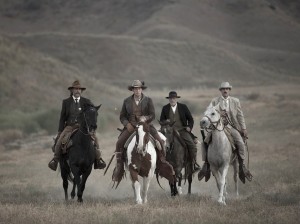 The cast of Bone Tomahawk is at their best, across the board. This is the best I’ve ever seen Kurt Russell, Patrick Wilson OR Matthew Fox, and I saw a couple new faces I hope to see again. The movie defies horror expectations by limiting the horror elements to just a few total minutes… there’s really not a lot of intense violence in this movie. But be warned: when there IS violence, it is SERIOUS. Some truly horrifying events happen in this movie, events you will not soon forget.
The cast of Bone Tomahawk is at their best, across the board. This is the best I’ve ever seen Kurt Russell, Patrick Wilson OR Matthew Fox, and I saw a couple new faces I hope to see again. The movie defies horror expectations by limiting the horror elements to just a few total minutes… there’s really not a lot of intense violence in this movie. But be warned: when there IS violence, it is SERIOUS. Some truly horrifying events happen in this movie, events you will not soon forget.
Still, 80% of the movie is pretty slow, and I mean that in the best possible way. Bone Tomahawk is primarily the story of a rescue, and most of it happens as our characters travel through wilderness from their town to an unknown destination. Over the course of their journey we get to know the characters very well, their inherent qualities as well as their history, learning more about each of them as they learn about each other. Their stories alone are worth the viewing, and the mysterious, looming threat of what they stand to face makes it ten times more interesting.
I wish this movie had gotten a bigger release, and I hope it’s successful enough to lead to much more work like this from writer and director S. Craig Zahler.
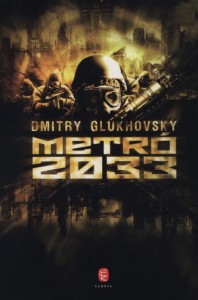 Metro 2033, a novel by Dmitry Glukhovsky. Published by Amazon Digital Services.
Metro 2033, a novel by Dmitry Glukhovsky. Published by Amazon Digital Services.
Decades after an extinction-level event, the remnants (and descendants) of the population of Moscow cling to survival in the Moscow Metro systems.
I was looking forward to this book, but it was a tough read to start. In fact, I should preface this by admitting I didn’t finish it. It’s a translation of the famous Russian post-apocalyptic novel, and although the narration is mostly very good, the dialogue is much less so. That’s one of this book’s two biggest problems.
The other problem is this: So far, practically the entire book takes place inside the Moscow metro system. Many metro stations are referred to, with such names as Kolomenskaya, Komsomolskaya, Krasnoselskaya, Krasnopresnenskaya, Alekseyevskaya, Kozhukhovskaya, and dozens of others. As a non-Russian speaker, the long, unfamiliar and quasi-similar names make it difficult to relate locations to each other, or to characters or events. Before long I was glossing over station names, and then character names, and it became hard to care about anything I was reading.
I found a solution, though, one that makes this book much easier to get through. I found a map of the Moscow metro online. The one I found is tied to the events of the book, which is even more helpful, but even a real Moscow metro map would make a big difference. Map in hand, I went back to the beginning and took a minute to mark each new location on the map as it was introduced. (Also, removing “skaya” from the end of each station name and looking for familiar names from Russian history made the names a lot more approachable.)
From a writing standpoint, the early chapters of the book give a Hell of a lot of backstory in big chunks of exposition, with little to no connection to current events or characters. This was one more thing that kept me from giving a shit on my first read. Still, I re-read it from the beginning, and I’m far enough into it now that it’s getting more interesting. I’m giving it another go this week, and am hopeful I’ll get a more rewarding experience. A pair of well-received video games were based on this book, and if the story hooks me, comparing the games to the source material seems like a really fun prospect.
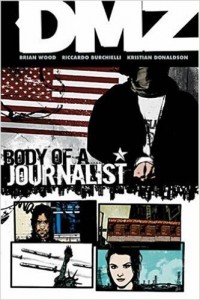 DMZ, a comic series by Brian Wood and Riccardo Burchielli. Published by Vertigo Comics.
DMZ, a comic series by Brian Wood and Riccardo Burchielli. Published by Vertigo Comics.
As a modern-day Civil War rages across the U.S., a young photojournalist is stranded in the “DMZ” of Manhattan, becoming the world’s eyes into one of the war’s most isolated and war-torn battlegrounds.
I haven’t read much of Brian Wood’s work, and DMZ is a series I’ve been curious about for a long time. It was successful enough, and similar enough to a story I’m currently working on, that it felt irresponsible not to read it. Although the story never completely enthralled me like my favorites do, or offered the kind of urgency that compels me to keep turning pages, it definitely offers an interesting view of New York City in the years following 9/11, and I wish I’d read it when it first came out (2004).
I never hold it against the writer when they don’t feel obligated to give a ton of backstory. You don’t always need to dig deep into the backdrop to tell the story you want to tell. The Walking Dead is a great example of this. There’s practically no discussion about WHY the dead began to walk… to Kirkman’s characters, it doesn’t matter. My own Last Sons of America makes a point of ignoring the questions that arise about the Agent Pink attacks, because the story takes place a generation after those attacks and deals with the world as it exists then.
In DMZ, though, I think it would have benefited from a lot more involvement from the Free Armies, the force the U.S. is fighting against. We eventually get some of that, but we don’t learn where the Free Armies came from for a loooooonng time, and even then, not in a very satisfying way. It’s cool to see the protagonist grow and change over the course of the series, but I still don’t feel like I understand the city much better than I did when I got dropped into it in issue 1. So far, the best arc by far has been “Body of A Journalist.” It offers a huge surprise for the reader, personal stakes for the protagonist, compelling new characters, meaningful details about the war itself, political intrigue… TONS to love about that arc, and it was the one part of the series so far that forced me to keep reading. I hope to find another arc as good when I pick the series up again.
 Accortet, a jazz album by Michael Bisio (bass). Relative Pitch Records.
Accortet, a jazz album by Michael Bisio (bass). Relative Pitch Records.
I sought out bassist Michael Bisio’s 2015 album Accortet primarily to hear cornetist Kirk Knuffke in another context, and NOW I can say I get what all the fuss is about. His solo album Lamplighter was too experimental for my taste, and while this album still challenged my preconceptions of what American jazz is and should be, Knuffke’s playing on it gave me a much clearer idea of what he can do. His cornet sound was every bit as good as it was on Lamplighter, but Accortet shows off his improvising skills, cornet technique, and sophisticated sense of time much better. I’ll be looking for more of his recordings and live NYC dates.
Knuffke’s inclusion on the album led me to it, which I’m grateful for, because I didn’t know any of the other musicians on this album. The choices of cornet and accordion for the frontline give the ensemble a timbre I’ve never heard. Bisio himself is best-known as an avant-garde bassist and composer, and while this album is certainly more free than most of my favorite classic jazz albums, it’s much more approachable than some of his other work. The songs are well-crafted and offer a lot of variety, the playing is good across the ensemble (although Knuffke and Bisio are the standouts in my opinion), and it’s heavy enough to give you a new experience if your jazz experience is limited to the “pantheon” and to the super-popular.
Next week:
Book: Metro 2033, Dmitry Glukhovsky. Published by Amazon Digital Services.
Comics: Southern Bastards (3rd arc), Jason Aaron and Jason Latour. Published by Image Comics.
Music: Sylva, jazz album by Snarky Puppy. Impulse Records.
Film: Sorcerer, starring Roy Scheider, Bruno Cremer, and Francisco Rabal. Directed by William Friedkin.
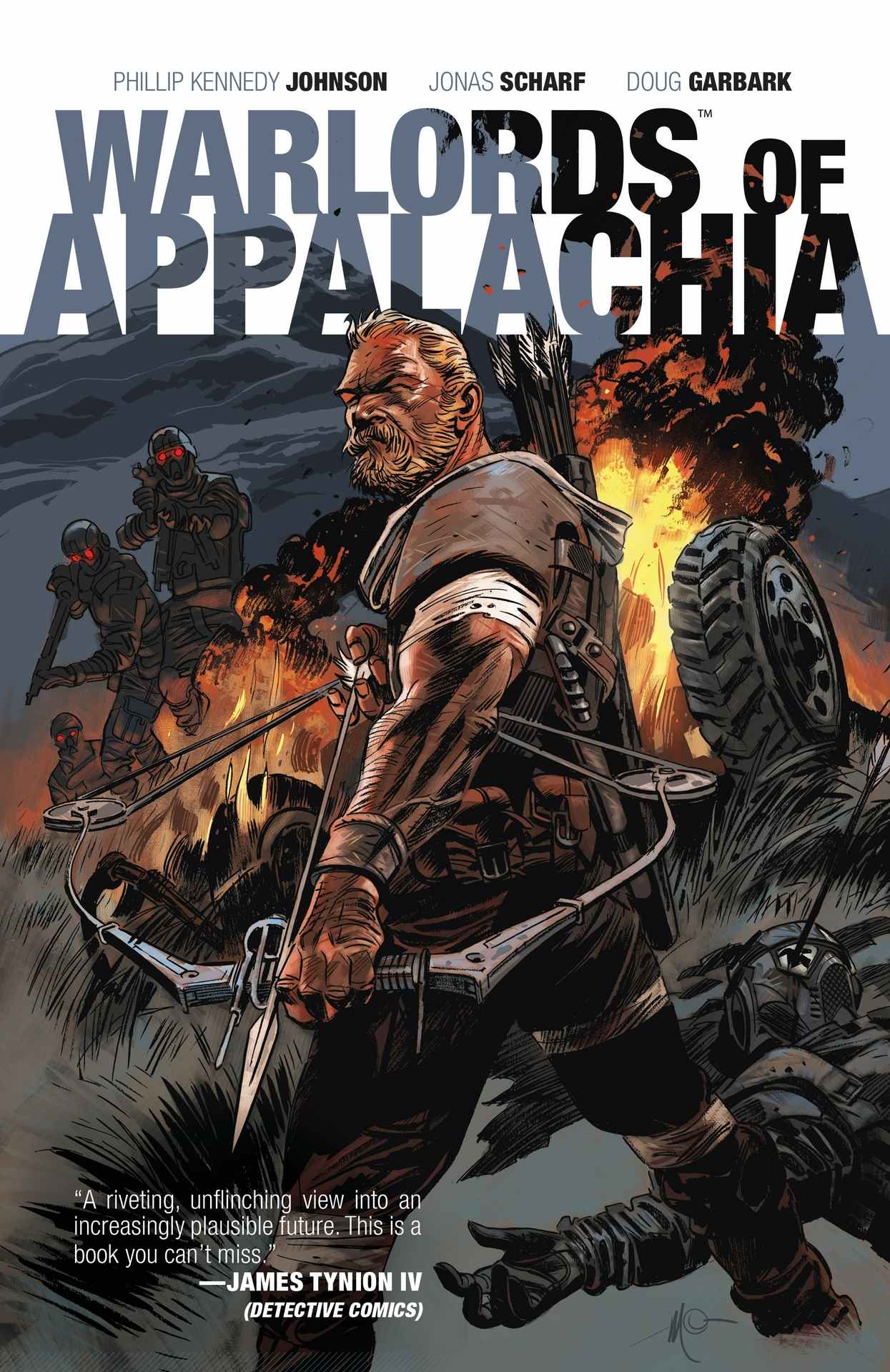
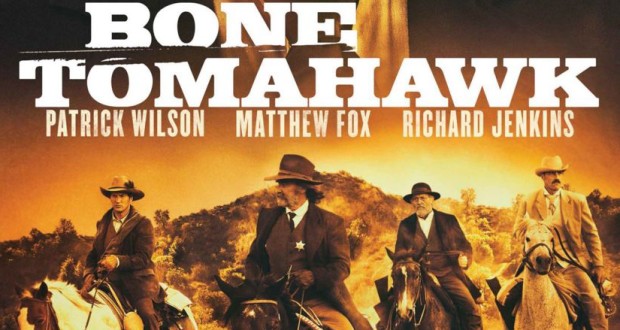

Leave a Reply